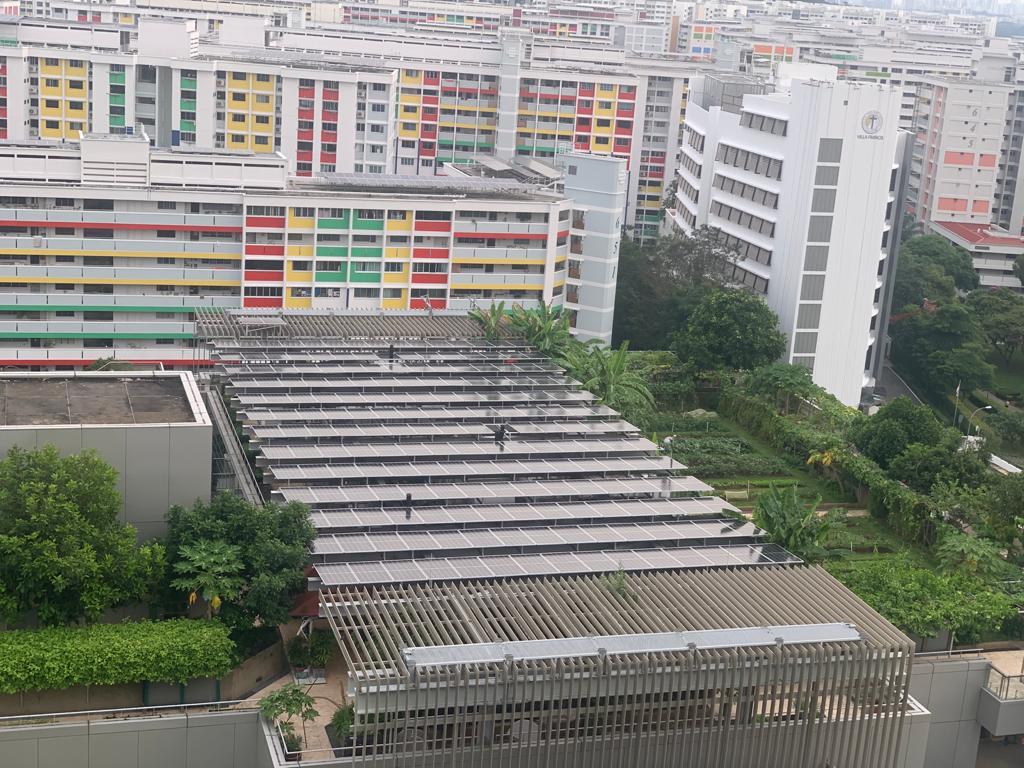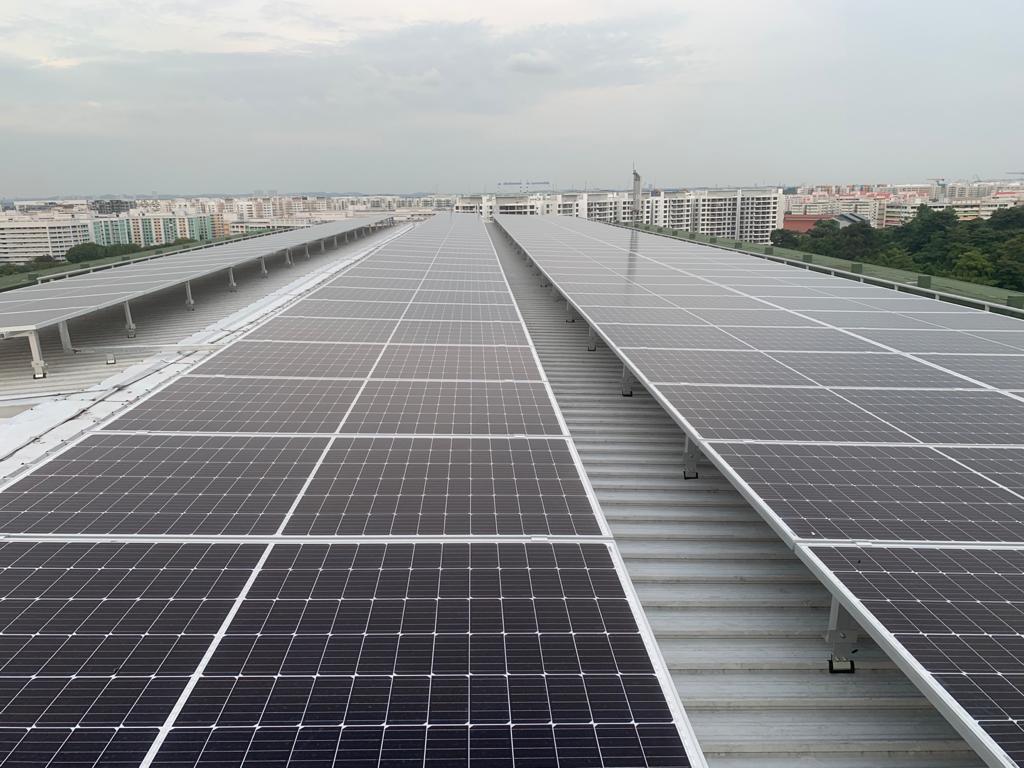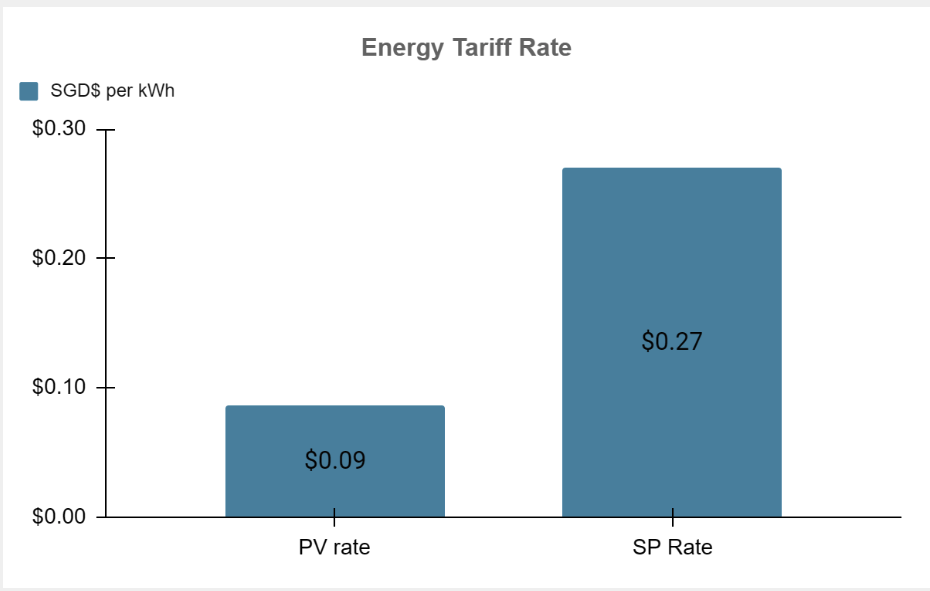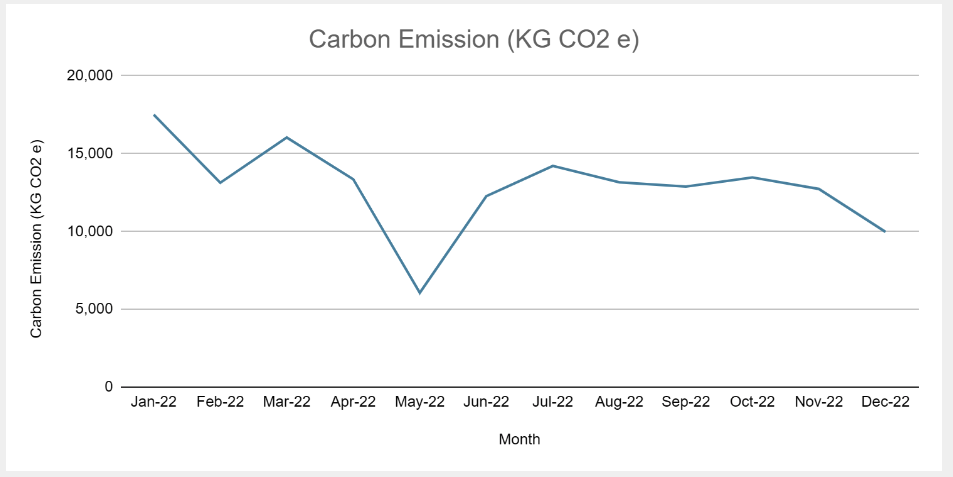Solar panels: A sustainable solution for reducing hospital carbon emissions
Khoo Teck Puat Hospital, Singapore
Case study summary
The hospital developed an energy reduction plan that centered around the installation of a photovoltaic system to reduce energy use and carbon emissions of the hospital.
A solar photovoltaic (PV) system is a renewable energy technology that converts sunlight into electrical energy. The system consists of several components, including solar panels, inverters, batteries (optional), and other electrical components.
Solar PV systems can be used for a variety of applications, such as lighting, low-power equipment, and small plug loads. This allowed the hospital to reduce energy consumption during the daytime. In addition, it reduces dependency on fossil fuel-based electricity.
Demographic information
- City: Singapore
- State/province/region: Singapore
- Country: Singapore
- Type of institution: Public health care institution
- Number of full-time staff: 4,500
- Number of part-time staff: 500
- Patient population served annually
- 241,000 patients served annually (total of inpatient and outpatient)
- Geographic area served: Northern Singapore
- Equity concerns experienced by your population:
- Socioeconomic status
- Health care access time
- Disparities in mental health
- Number of beds: 591

The issue
Energy use has a significant impact on patients and health care workers. The cost of energy affects patient services and leads to higher costs. Poor air quality and increased greenhouse gas emissions can exacerbate respiratory conditions, allergies, and other health issues. Embracing sustainable energy practices can contribute to improved air quality, leading to better overall health outcomes.
The hospital aims to use energy-efficient equipment and install a clean energy system to reduce dependency on fossil fuel-powered electrical sources. This will reduce the carbon dioxide emissions of the facility and minimize environmental impact.
Hospital goals
- Secure funds for staff or consultants to become a low-energy building.
- Achieve savings of 1.5% on energy consumption annually.
- Reduce carbon emissions by 50% in 2030.
- Establish outreach with the community through exhibitions and picking up litter in the park.
- Reduce waste by only making purchases that are necessary.
Sustainability strategy implemented
The strategy involved raising awareness, education, and collaboration among staff, the community, and partners, including:
- Conducting an environmental impact assessment. This audit identifies how the hospital is using energy, water, and other resources.
- Developing a sustainability plan that focuses on reducing energy use, water use, and waste generation.
- Implementing sustainability initiatives including water-efficient fixtures, energy-efficient lighting, and energy-efficient systems.
- Installing a solar photovoltaics system.
Implementation process
The Green and Sustainability Committee together with facilities management and biomedical engineering lead the hospital’s energy and water efficiency initiatives to curb carbon emissions.
The strategy is driven by the hospital’s facilities management and includes cross-collaboration with the Housing Development Board (HDB) to install a solar PV system on the hospital building. HDB had extensive experience with solar PV installations, with different phases covering most HDB flat rooftops where practicable.
Hospital management is very supportive of any plans that will contribute to carbon reduction and sustainability. Case studies of similar solar PV installations based on leasing models accelerated the decision to install solar PV at the hospital.
Facilities management staff were involved with the solar PV installation along with the service provider. The service provider takes care of the maintenance and operation of the solar PV system, as it is based on a leasing model. Facilities management staff received adequate training to monitor the energy generated. It took about nine months to complete the solar PV installation on three towers of the hospital.

Tracking progress
The hospital set a target to generate 1% of clean energy based on average monthly consumption. It is achievable with sufficient sunlight and a good irradiance level. Clean energy generation is tracked through a dashboard or local meter. The minimum guarantee of clean energy is 30, 989 kWh with sufficient irradiance.
There is no cost to the hospital as it is built based on a leasing model. Installation and maintenance costs will be undertaken by the service provider. The hospital will receive a 68% discount off the tariff rates charged by Singapore Power, the national grid provider of Singapore. This model also eliminates any maintenance costs due to wear and tear.

Progress achieved
The hospital will obtain clean energy at a 68% discount off the national tariff rates. In addition, the facility will not incur any cost related to the maintenance of the solar PV system. There has been a total of 154,722 KG CO₂ emissions saved from the clean energy generated. This also has an environmental benefit, as there is an avoidance of 368,504 kWh that would have been generated by fossil fuel-based equipment. The solar PV system was commissioned and put into service in July 2021.

Financial benefits are achieved by avoiding the maintenance and operating costs of the solar PV system. This led to a reduction of approximately S$300,000 (USD 225,146) in the installation cost. The service provider needs to ensure the solar PV is in optimum condition to recover the cost through tariff rate sharing.
The secondary benefits are reduced air pollution and increased value of the green buildings. This also leads to job creation in the solar industry for system maintenance.
Challenges
- Identifying an experienced solar PV installer such as Sunseap and SembCorp through open tender in the local market.
- Long lead time for materials due to logistical constraints.
- Need to constantly engage health care workers on strategies for saving energy.
- Mindset and lifestyle changes to meet energy-saving initiatives.
- Meeting local regulations such as fire safety and building code requirements.

Lessons learned
- Strong coordination and project management skill sets are needed.
- Effective communication and cascading of information can help with buy-in.
- Leaders need the ability to influence and adapt to new sustainability strategies.
- Need leadership endorsement to affect the changes.
Next steps
The hospital planned to identify more clean energy generation methods to further curb carbon emissions. This includes new projects such as:
- Using wind energy to convert to electrical energy for battery system storage.
- Using occupancy sensors to automatically shut off power when not in use.
- Increasing food waste digester capacity.
- Replacing energy-efficient system.
There also is a plan to share data with the approval of the hospital, but the challenge remains that the collection of these data comes with a cost.
Links
- Seeking Sustainability: the Khoo Teck Puat Hospital experience
EMA | Solar Photovoltaic Systems - EMA | Guide to Solar PV
- SEAS case studies
- SolarNova Programme
- Singapore Green Plan 2030
- Energy Market Authority (EMA) of Singapore: Understanding the tariff
- Super Low Energy Building (SLE) - Advancing Net Zero | Building and Construction Authority (BCA)